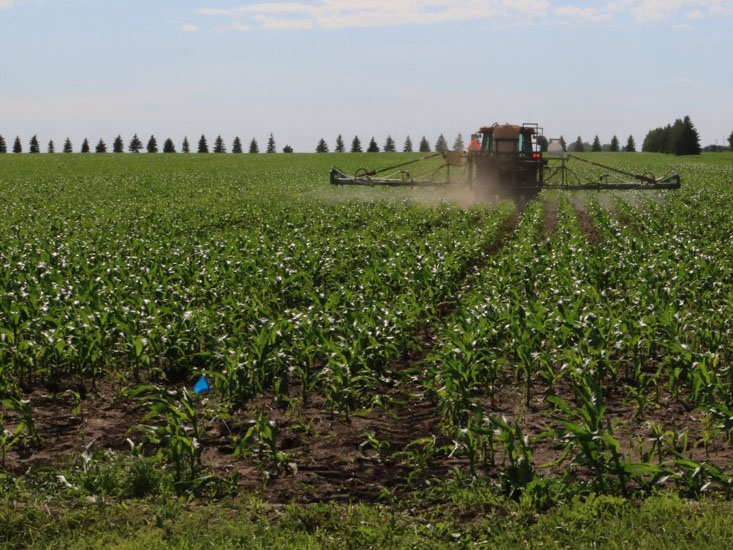NDSU Precision Agriculture Research May Lead to Significant Savings

A common agronomic practice for weed management in corn is to make two herbicide applications during the growing season. The first one commonly is done at pre-planting or immediately after planting, while the second usually takes place around the V4 to V6 growth stages. The cost of the second herbicide application is usually around $15 to $20/acre.
A group of NDSU researchers on the main campus and at the Carrington Research Extension Center (CREC) is working to make that cost a lot less.
“Using unmanned aerial systems (UAS, commonly known as drones) imagery, one can create weed control prescription maps, which can be loaded into sprayers to implement site-specific weed management,” says Paulo Flores, NDSU Department of Agricultural and Biosystems Engineering assistant professor. “Site-specific weed management is a method to limit the application of herbicides only to areas with weeds.”
In 2018, a 40-acre corn field at the CREC was sprayed with herbicide after a prescription control weed map was created. Researchers created a 20-foot-long by 30-foot-wide grid cell map of the field that they intersected with UAS imagery showing where weeds were located between the corn rows. By manually turning their sprayer on only in the cells containing weeds, the researchers were able to decrease the area that needed to be sprayed by 16%.
Using the same weed data layer and by decreasing the grid cell size to 10 by 10 feet or to 3.28 by 3.28 feet, the area not sprayed would go up to 40% and 70%, respectively.
“Based on the research results, the use of UAS imagery for site-specific weed control on corn has the potential to generate savings for corn growers by decreasing the area that needs to be sprayed,” says Mike Ostlie, CREC research agronomist. “In addition, there is a potential to decrease the environmental impact of corn production as well since the approach reported here would lead to less chemicals being applied to corn fields.”
“This approach could save corn growers in North Dakota as much as $5 million to $7 million annually, with as little as a 10% reduction in applied acres,” says Flores.
Despite the technical difficulties faced during the last two growing seasons, the group intends to continue the research in 2021.
FOR MORE INFORMATION:
Paulo Flores, 701-231-5348, paulo.flores@ndus.edu
Mike Ostlie, 701-652-2055, mike.ostlie@ndsu.edu
https://www.ag.ndsu.edu/carringtonrec/documents/annual-reports/2018-annual-report


